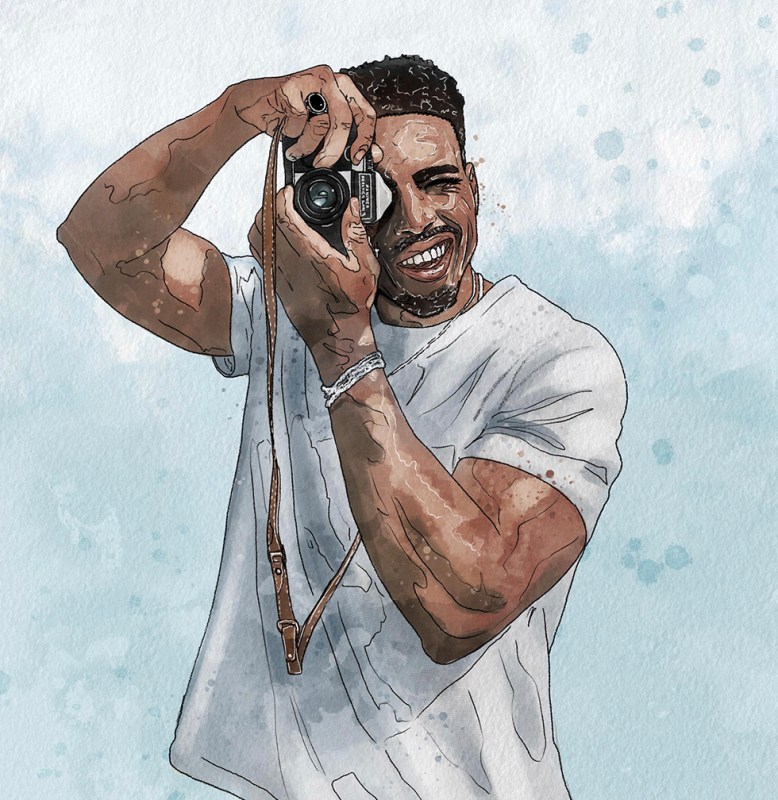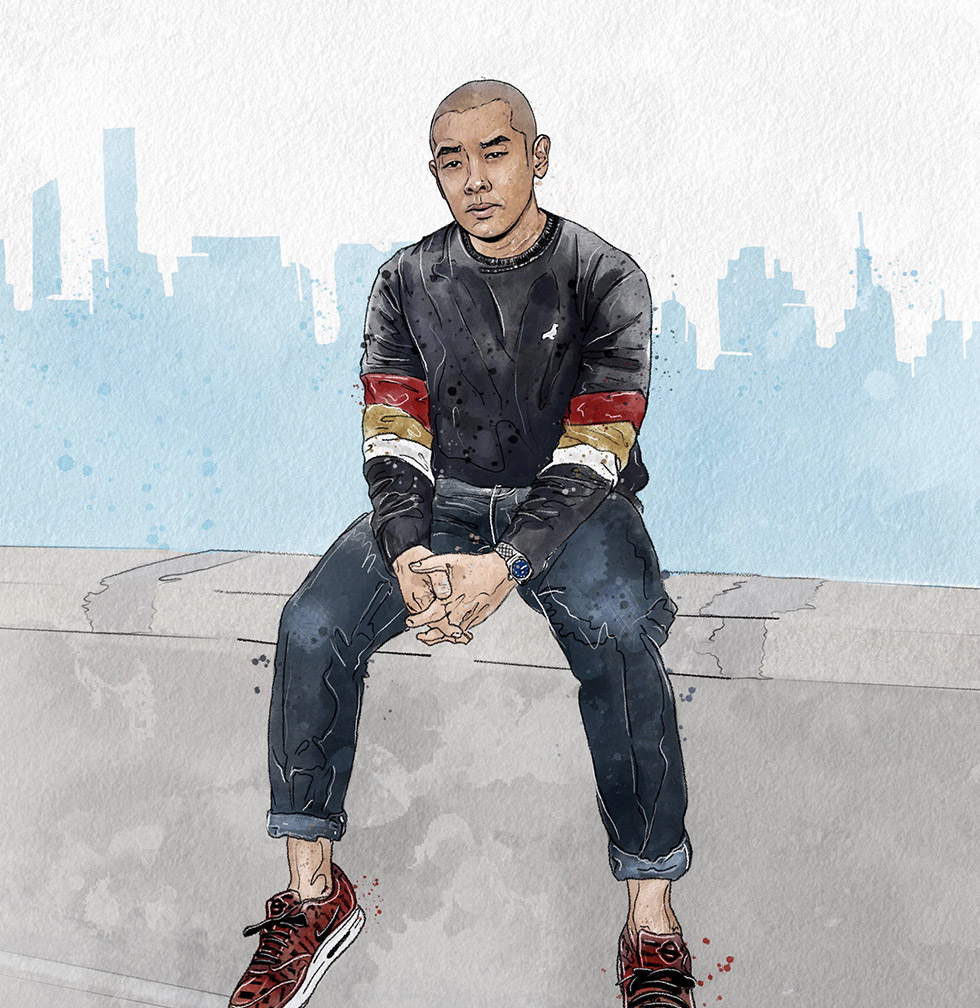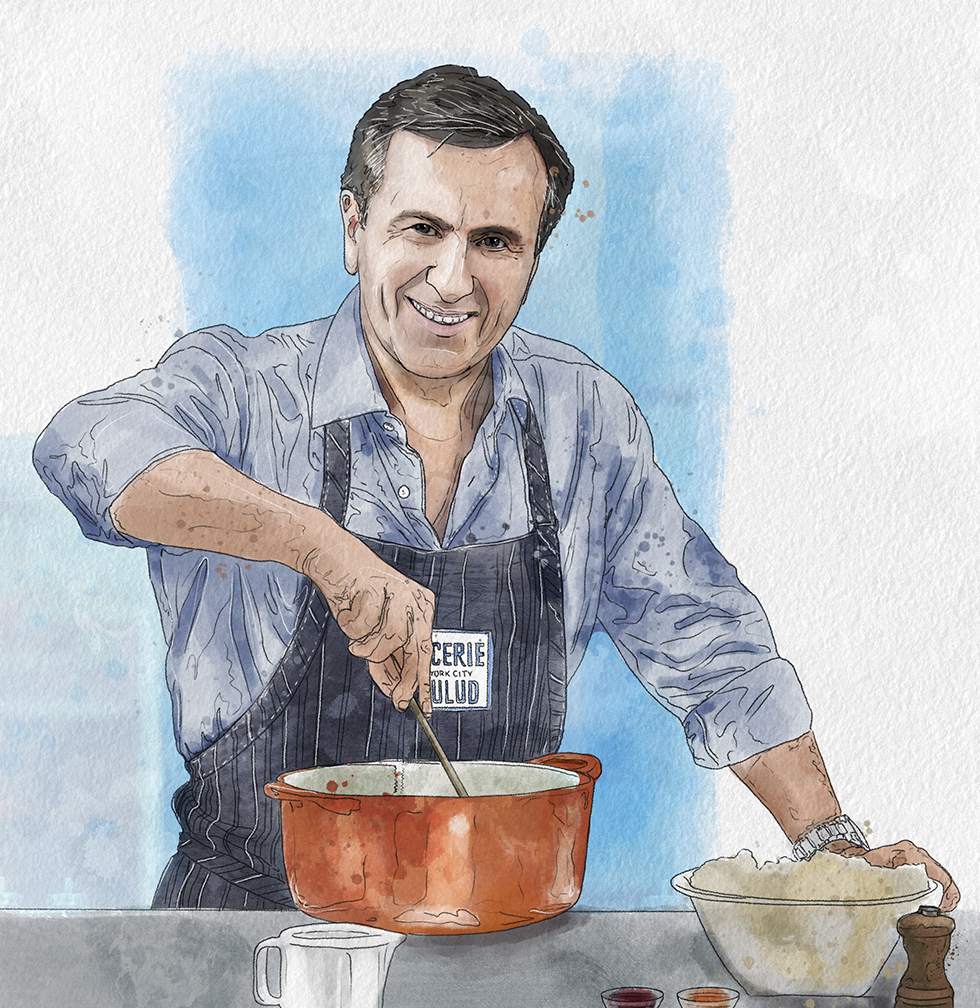Of all the phrases relating to the parting of a man and his money, few are more gratifying to use than “worth every penny.”
Those three words communicate the idea that while yes, you spent — perhaps more than you had originally intended or are traditionally comfortable with — you did so knowing that the item you purchased was ultimately worth it.
Such items can come in many forms, but all have a story. So we decided to sit down with a few of our favorite in-the-know gents about their most prized possessions, how they came to own them, and the reasons they continue to resonate long after their original acquisition.
Today’s subject: adventure travel photographer Karl Shakur, a Kansas native who traverses the globe to capture jaw-dropping shots of some of the world’s most far-flung and breathtaking places.
Whether he’s wandering a lonely stretch of black-sand beach in the shadow of Iceland’s famed Vestrahorn peak, driving a vintage VW bus through the towering forests of Australia’s remote Maroondah Highway or swimming alongside black tip sharks in the waters of French Polynesia, Karl’s unique eye has made him the go-to shutterbug for clients ranging from Samsung to Adobe to Condé Nast.
In short, this is a guy who has likely forgotten more about capturing amazing imagery than most of us will ever know, and thus we were keen to hear about the one camera he holds most dear.
InsideHook: So tell me about this camera that was worth every penny. How did you come to own it?
Karl Shakur: It’s a Hanimex Praktica Super TL. It was in the Northeast in the middle of fall, I think in New Hampshire. I was photographing fall colors across the East Coast, making a trip out of it. I just decided to walk into this thrift store. I was cruising the aisles and I caught this camera in the corner of my eye. I don’t know if the owner knew how much it was worth, but nowadays they go for something like from 200 to 250 bucks. It was just on the shelf for 20.
I thought, “It looks cool. It must be broken or something. It must be only good for sitting on top of a coffee table.” Then I picked it up and tested it out, and it seemed to be working. I was giddy. I just decided that the best thing was just to play it cool and not let this guy know how much this thing is worth. I bought it right on the spot, and immediately went to Walmart and bought some film.
It’s very enjoyable to hold. It’s made of solid steel, it’s encased in leather, it has a very vintage-looking strap. The lens is very small and very tactile when you click. I don’t know when it was made, but it’s definitely very old looking. It feels like it’s definitely something from before my time. It took me a while to get a hang of it. I had to get a light meter and all that stuff, then figure out how to use the tool. But after figuring it out, it just became a complete pleasure.
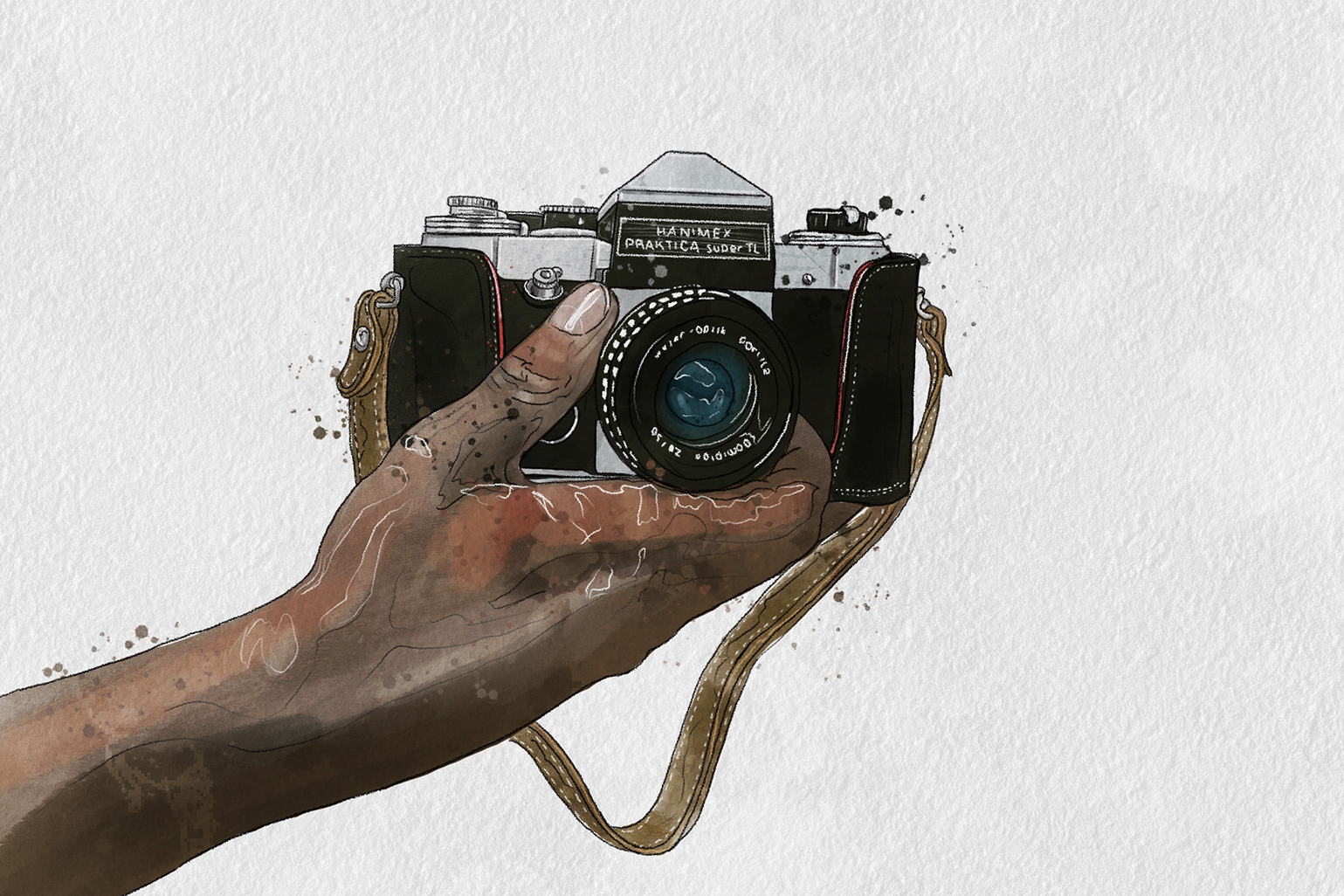
Do you remember the first photos you took with it?
Yeah, the first photos were of my cousin’s wedding in London. My cousin is Nigerian and he married an Icelandic woman. It was a very interesting wedding, how the two cultures were brought together. It was very colorful to photograph. I was just using the opportunity to have fun and play with it. That was the first experience I photographed after I got back from the trip from the Northeast, the first time I busted it out purposefully.
Do you feel like that process of teaching yourself to use the tool makes using it that much more gratifying?
Yeah. I think of something that one of my friends said: “It’s a lot easier to get from 0% of a skill to 80% of the skill, and that’s where the enjoyment takes place.” That learning process. Just the whole process of relearning a familiar skill, the whole process of loading film, you actually park it in there, and rolling it up, and it clicking, and making sure that you’re rolling it up after … that whole process of learning what the right thing is to do. Obviously having a couple of messed-up rolls of film is so enjoyable. It’s like learning the whole process from scratch again. I definitely think it’s more valuable in that sense.
Whether it’s a vintage thrift-store camera or some other possession whose value can’t be described in simple monetary terms, those things that are “worth every penny” all share a common trait: they make us feel something. They have surpassed the realm of mere object and become a conduit for emotion.
This is a concept that the team at Lexus understood deeply when designing the new LC 500 Convertible, an automobile engineered in every way to stimulate the senses and create an experience of peak exhilaration and joy. This is a car built to give the driver a serious case of the feels.
It begins with a chassis strengthened by underbody bracing, resulting in a greater sense of connection to the road and a more visceral, responsive driving experience — long story short, when you rev the 5.0-liter naturally aspirated V8 under the hood, you’re gonna feel all 471 horses, from your eager right foot all the way up through the raised hairs on the back of your neck.
You’ll hear it too, thanks to an Active Sport Exhaust System that foregrounds the vehicle’s thunderous exhaust notes, as well as an Intake Sound Generator that carries the engine’s intake pulses through a diaphragm and then pipes the sound into the cabin to enhance the V8’s rumble.
What you won’t hear is unwanted noise, owing to a transparent polycarbonate wind deflector that helps restrict unwanted turbulent air from entering the cabin, in addition to an Active Noise Control system that combines insulation and absorption techniques to filter out harsh sounds and let you chat comfortably with your passengers.
Bottom line: this isn’t a car to just get you from A to B — this is a car that makes the trip from A to B a destination unto itself. That’s what makes it a keeper.
Are there other, less tactile elements that make this camera particularly special to you?
I think what makes it special to me is that … because I live in such a fast paced, photo-based world, I can take stuff from my phone, grab memories on my phone and on my camera, and I can feel that instant gratification. This camera is a like time box, a memory capsule of some sort. When I take the photos, I often go months or maybe half a year before I see the images. Because I’m traveling so often, I’ll send them in to get developed, they’ll get sent back to my house, and I won’t get to see the images until I eventually make it back home after like half a year of travel. There’ll be this whole package of film photos that have been developed and been printed on small slides, and I go through the images.
That’s what makes it so special for me: I don’t get to instantly see the images that I’ve taken, it takes a while for me to appreciate and to be able to perceive those memories that I captured. I’m usually using it to photograph memories that I wouldn’t be photographing in my regular career, because I feel like it’s just a lot better for capturing those more intimate, low-key, personal moments. That’s what makes it special. It takes me out of my job, out of that creative mind space, and it lets me use it as a tool for experiencing rather than creating.
Do you feel like the delayed gratification makes those memories more powerful, just because when you see the photos for the first time it’s been awhile since you took them?
Yeah. I completely forget how valuable those moments are. It’s basically the same feeling as going through your camera roll, but you mistakenly hit the top of your phone, and it scrolls all the way to the top. You’re transported to 2012 and you see all these moments, like, “Whoa. This is a blast from the past.”
On top of that, if I have that experience where I have to physically go through every single slide, and through each picture, and be in that moment. Just the whole experience of having the camera and being able to develop those film photos, and experience those film photos.
Do you keep all the photos in one place?
Yes. They’re sitting on my bookshelf, all stacked very neatly. I photograph and scan some of them, just so that I can have them digitally if I need to reference them.
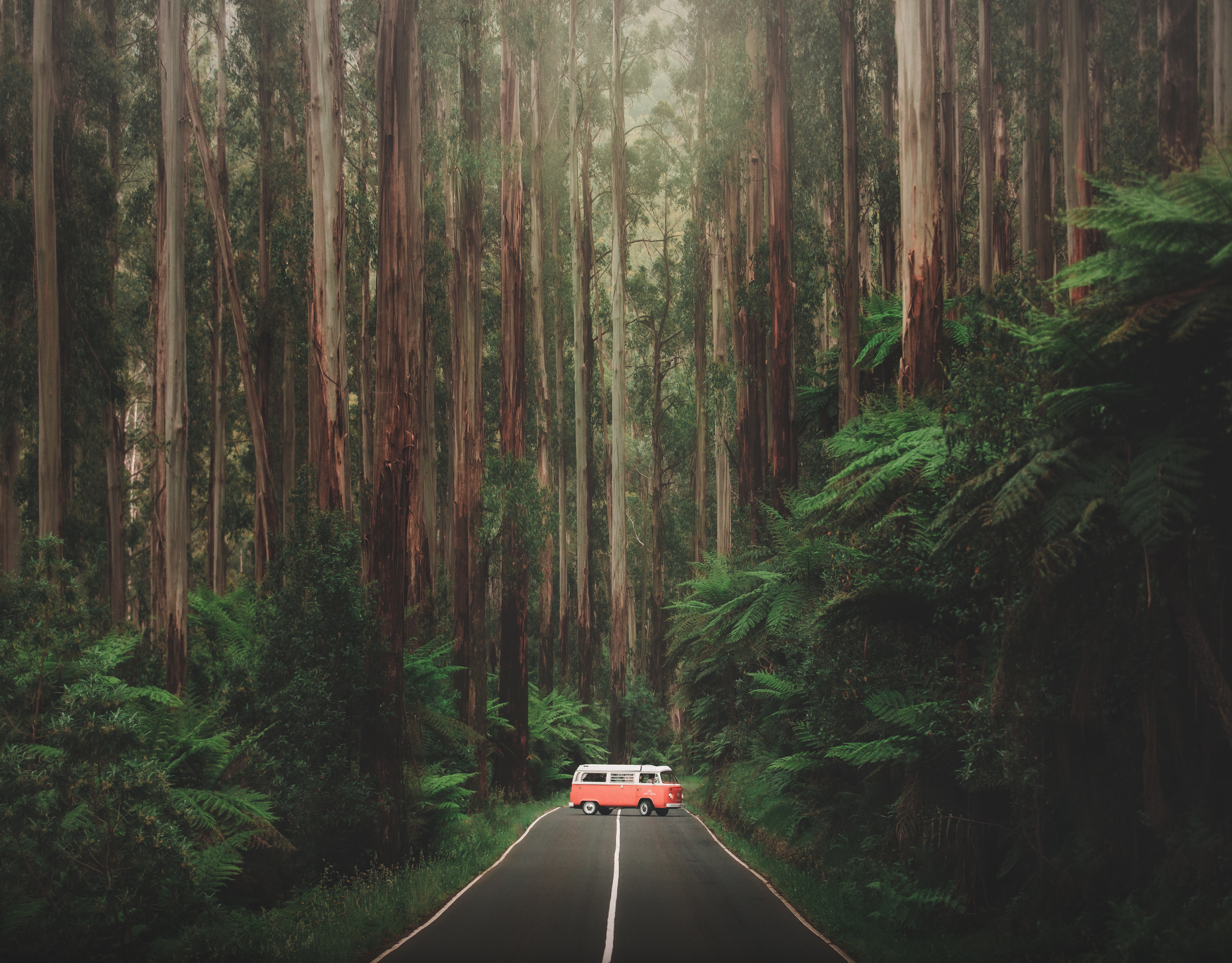
You travel all over the world to these remote places to shoot professionally. Has this camera gone with you on those trips?
It’s been with me to a lot of places, but because I’m so focused on getting the client photos, sometimes I forget to bring it out. So it’s been a lot of places, but it’s only when I’m relaxing, when I’m very intent on capturing a personal memory, that it comes out.
Any favorite photos you’ve taken with it?
I don’t think I necessarily look at it in that sense. I could easily tell you what my favorite photo from my professional camera was from the last half a year, but because I think each physical photo is more of a window into my memory than a digital … I wouldn’t say I necessarily have a favorite photo. But I would say there are a lot of powerful ones that instantly transport me back into the time.
I have one, it’s a photo that my friend and I took at a waterfall in Indonesia. I’d just been shooting sunrise, we’re just about to eat breakfast, and standing on the edge of this waterfall. Our chaperone, the driver we had hired, I just asked him to take a photo. It’s a very candid, very chill photo — very, very different from what I would usually be taking. I’d say that instantly transports me back to that time.
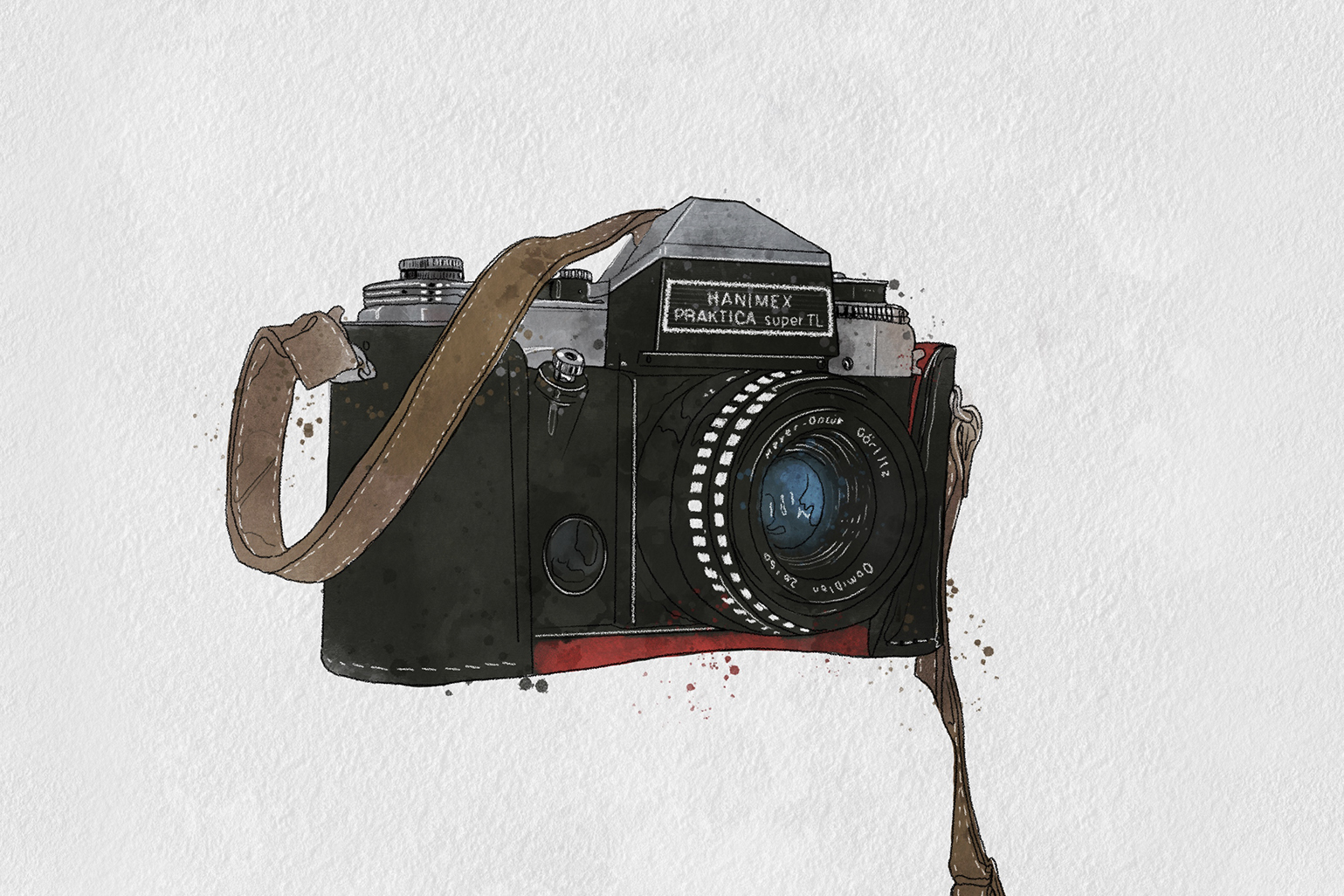
Would you ever consider loaning this camera to anyone in your life?
I wouldn’t necessarily think they would need it, because I have a plethora of other cameras that could definitely do a much better job than this camera. I wouldn’t have any problems loaning all my other cameras, but because this has such sentimental value, I think …
… that you would try to steer them toward one of your much more expensive cameras rather than the one you bought for $20.
[laughs] That is true. I think that’s just because I’m very aware that my other cameras could do a much better job of properly capturing the light, and they’d be able to instantly see and review the images that we create. But this camera holds a lot of sentimental value. I look forward to giving it to my child in the future, that kind of thing.
Can you speak to the different way you feel using this camera vs. one of those digital ones?
If I want to accurately document how something is, I would use one of my better cameras. But this, I use it to transport me back into the past, how I felt during that moment. For some reason, these more tactile photographs that are printed out from this camera give me a much, much sharper and much more candid transportation into the past. Capturing emotion rather than accurately depicting things as they were.
I think I’m drawing connections between physically handling the photograph and the experience of using the camera, of how enjoyable that is. The process of preparing the camera, uncapping the lens, winding the film, making sure we’re good, and then clicking it, and then just having that one photograph.
Obviously when I’m photographing with my digital camera, I have a burst mode where I can make sure that I capture every single millisecond before and after whatever action I’m trying to photograph. But this one is just a much more contemplative and slow process. It’s almost meditative in a sense, that you have to slow down. You got this one chance. Just grab that one click, and that’s all you get.
It’s like a little bit of a ritual each time.
It absolutely is.
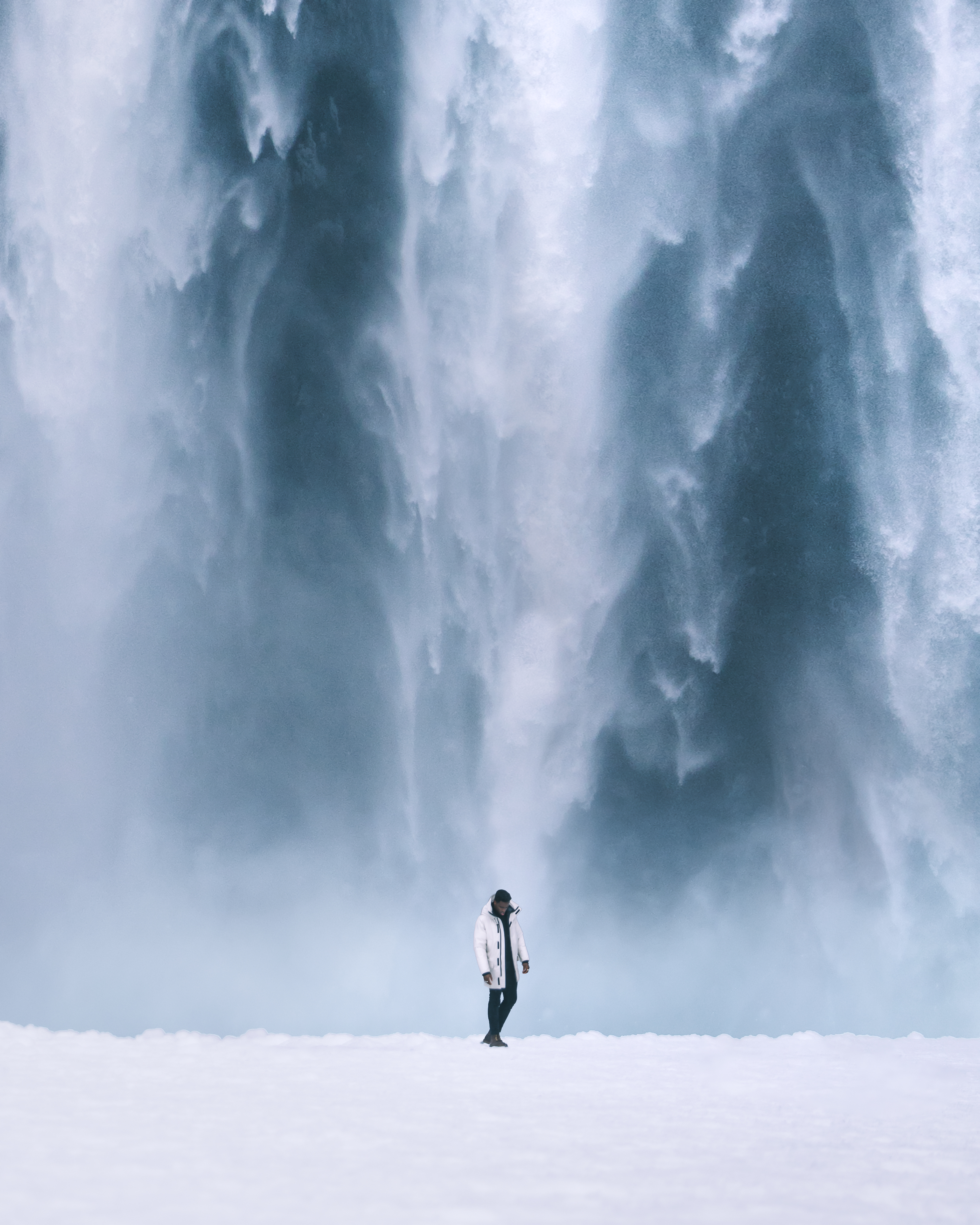
Does that speak to any larger life lessons you’ve learned from owning this camera?
Having the camera has taught me to actually slow down and fully submerge in experiences, fully experience the moment. Because when I’m, for example, in Bora Bora, and the water’s blue and the sun is shining, as much as I should be enjoying it, I’m very much in work mode in that I’m trying my best to capture whatever is in front of me. When I’m done doing that and it’s time for me to relax, that’s when I pull this one out. I want to fully be in the moment and experience the moment, and use it to capture that sensation.
What if you could go back to the moment when you got the camera itself?
If I could go back in time to that specific moment, I would definitely stroll around the shop a lot more, take in the sights and the sounds, the smells … at a thrift store, you know how dingy and musty it smells. Boom, capture that experience as the experience that taught me to capture experiences.
I think that was a turning point in my adult life, where I started fully using the camera to take mental and sensational images that I can cherish. Mental images and fully being in the moment, that was the moment where that began. This camera holds this very special place in my heart, that it symbolizes the beginning of a journey.
Illustrations by Dylan O Brien
